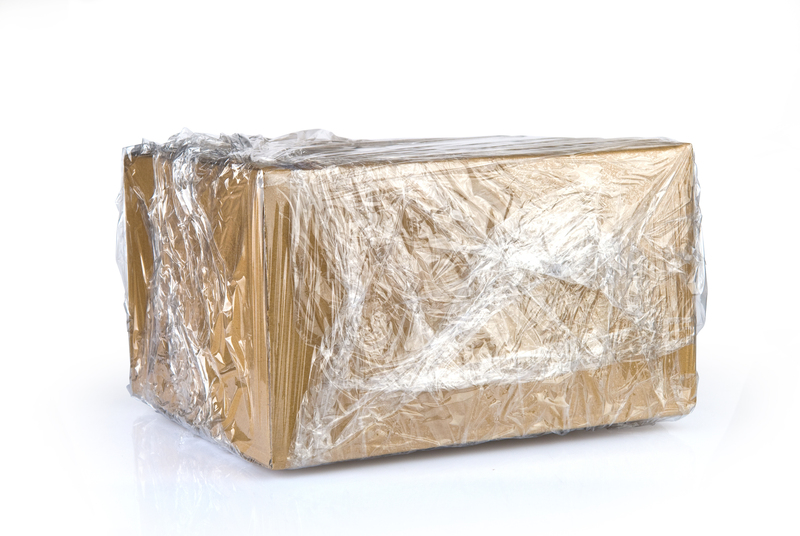Optimize Sofa Preservation: Expert Storage Insights
Posted on 17/05/2025
Optimize Sofa Preservation: Expert Storage Insights
Sofas, often the centerpiece of our living spaces, are major investments in home comfort and design. Whether you are preparing for a long move, renovating, or clearing space, understanding how to optimize sofa preservation is crucial. Proper sofa storage protects your valuable furniture from dust, moisture, pests, and potential wear-and-tear, ensuring it remains in pristine condition for years. In this comprehensive guide, we delve deep into expert sofa storage tips, techniques for cushioning longevity, and optimal preservation practices that guarantee your sofa's extended life and aesthetic appeal.

Why Sofa Preservation Matters
A sofa is more than just a seat--it is a haven of relaxation and a focal point for gatherings. The quality and cleanliness of your couch reflect your home environment. Proactive preservation strategies not only maintain your sofa's look and comfort but also save you significant money in the long run. Understanding the science behind sofa degradation and effective storage solutions ensures your investment withstands both time and trends.
Preparing Your Sofa for Storage: Essential First Steps
Optimal sofa storage starts with meticulous preparation. Skipping these vital steps can minimize the effectiveness of any preservation technique. Here's your go-to checklist:
- Clean Thoroughly: Begin by vacuuming every crease and corner. Remove pet hair, dust, and dirt, which, if left, can attract pests or lead to odor development.
- Spot Treat Stains: Address all visible stains using a suitable fabric or leather cleaner. Ensure spills are cleaned and dried completely before any storage.
- Disassemble When Possible: Remove legs, detachable cushions, and arms if your model allows. This step simplifies transport and reduces the risk of breakage.
- Label & Bag Hardware: Keep all screws, bolts, and small parts in a clearly labeled bag taped to the sofa frame for easy reassembly later.
Choosing the Right Storage Environment
The environment where you store your sofa significantly influences its long-term preservation. Optimize for safety by considering the following factors:
-
Climate Control:
- Always opt for climate-controlled storage units when possible. Extreme fluctuations in temperature or humidity can warp wood, crack leather, or encourage mold growth on fabric sofas.
- Maintain consistent humidity (ideally between 40-55%) and stable temperatures (between 65-75?F or 18-24?C).
-
Cleanliness:
- Choose a storage facility that is clean, secure, and well-maintained to ensure optimal sofa preservation.
-
Elevation:
- Never place your sofa directly on the floor. Elevate it on pallets or with furniture risers to prevent direct contact with potential moisture or pests.
Sofa Preservation Materials: How to Protect Every Inch
The right packing materials are central to expert sofa preservation. Make use of the following:
- Furniture Blankets: Wrap the entire piece in furniture pads or moving blankets for maximum protection against knocks and scratches.
- Breathe-Easy Covers: Avoid plastic wrap directly on the upholstery, as it can trap moisture and cause mildew. Instead, use quilted or breathable fabric covers.
- Cushion Storage: Store cushions vertically and loosely to maintain shape and avoid compression. Encase them in cotton bags for additional dust protection.
- Desiccants: Place silica gel or moisture-absorbing packets under and around the sofa to ward off humidity-related damage.
- Mothballs/Pest Repellents: Position natural pest deterrents nearby, but never directly in contact with the fabric or leather.
Special Considerations: Leather Sofas vs. Fabric Sofas
Varied sofa types demand individual strategies for optimized preservation:
-
Leather Sofas:
- Clean with a gentle leather cleaner and condition using a proven leather conditioner before storage.
- Avoid sunlight exposure, which can dry and crack the leather.
- Allow space for leather to breathe; never use airtight or plastic wraps.
-
Fabric Sofas:
- Opt for dry-cleaning or professional cleaning for thoroughness.
- Check for colorfastness before using any cleaning product.
- Use breathable covers to keep dust away while letting fabric ventilate.
Optimal Storage Practices: Positioning Your Sofa
To preserve your sofa's structural integrity:
- Upright Positioning: Store sofas in their natural upright position. Laying them flat can distort frames and cushions.
- Avoid Stacking: Do not stack heavy boxes or items on top of your sofa; prolonged pressure causes dents and may warp the frame.
- Distance from Walls: Keep your sofa at least 2-4 inches from walls to allow airflow and prevent moisture build-up.
- Allow Space to Breathe: Avoid tightly cramming your storage unit; leave gaps for air circulation around your furniture.
Long-Term vs. Short-Term Storage: Adjusting Strategies
Short-Term Sofa Storage Solutions
For temporary relocations or brief renovations, follow these best practices for short-term sofa storage:
- Quick clean and vacuum to minimize surface dirt.
- Cover with cotton or muslin sheets to keep dust at bay, but allow ventilation.
- Frequent checks (every few weeks) to ensure no new stains, pests, or mildew have appeared.
Long-Term Sofa Preservation
For months or years in storage, extra care and planning are required:
- Apply additional layers of protection with padded covers.
- Regularly replace desiccant packs to maintain dryness.
- Schedule periodic airing to discourage trapped moisture and odors.
- Engage storage facility staff for periodic inspections if possible.
Common Mistakes to Avoid When Storing Sofas
Even well-intentioned storage efforts can fall short. Avoid these frequent errors:
- Direct Plastic Wrapping: Suffocates fabric or leather and leads to trapped moisture, causing mold and mildew.
- Neglecting Pre-Storage Cleaning: Can result in permanent stains or pest infestation over time.
- Ignoring Climate Factors: Heat, cold, and humidity extremes are silent killers of upholstery and wood.
- Improper Disassembly: Not properly removing legs or cushions can cause pressure points and frame cracks.
After-Storage Care: Reintegrating Your Sofa Safely
When it's time to bring your sofa out of storage, proper reintegration is just as essential as storage:
- Resist Immediate Use: Allow your sofa to air out for a day or two before placing it back in a living space.
- Vacuum & Clean: Even with covers, dust can accumulate. Give it a thorough cleaning before setup.
- Inspect for Damage: Check frames, fabrics, cushions, and hardware for any issues sustained during storage; address them promptly.
- Condition Leather and Fluff Cushions: For leather sofas, apply conditioner. For fabric, fluff cushions to restore shape and softness.
Expert Tips for Longevity: Extending Sofa Life Post-Storage
True sofa preservation doesn't end with storage--it continues throughout its use:
- Regular Cleaning: Vacuum and spot-clean your sofa every month to prevent grime and allergens.
- Rotate Cushions: Swap and flip cushions regularly to distribute wear evenly.
- Shield from Sunlight: Position your sofa away from direct sunlight to prevent fading and drying (especially for leather upholstery).
- Manage Humidity: Use dehumidifiers in muggy regions and humidifiers in dry climates to maintain a balanced environment.
- Use Armrest Covers: Armrests are high-contact areas. Invest in removable armrest covers for easy cleaning and extra protection.

Sofa Storage FAQs
How long can I store my sofa before it is affected?
With optimal conditions and preparation, most sofas can remain in storage for several years with minimal deterioration. The key variables include humidity, cleanliness, and regular periodic checks.
Is it better to store a sofa upright or on its back?
Always store your sofa in its upright, natural position. Altering its position increases the risk of frame warping and cushion distortion.
Can plastic wrap be used for sofa storage?
Never use plastic wrap directly on your sofa, as it traps moisture and encourages mold and odors. Opt for breathable materials or specialized furniture covers instead.
What if my sofa develops mold or mildew after storage?
Move the sofa to a well-ventilated area immediately. Remove covers, vacuum thoroughly, and treat affected areas with specialized cleaning agents. If damage is severe, consult a professional upholsterer or cleaner.
Conclusion: Mastering Sofa Preservation for the Years Ahead
Expert sofa storage insights help maximize the lifespan and beauty of your cornerstone furniture piece. Remember, the secret to optimizing sofa preservation lies in methodical preparation, suitable environment selection, and careful reintegration after storage. By following these expert tips and applying consistent care, you can preserve your sofa's comfort, value, and style for countless gatherings and memories yet to come.





